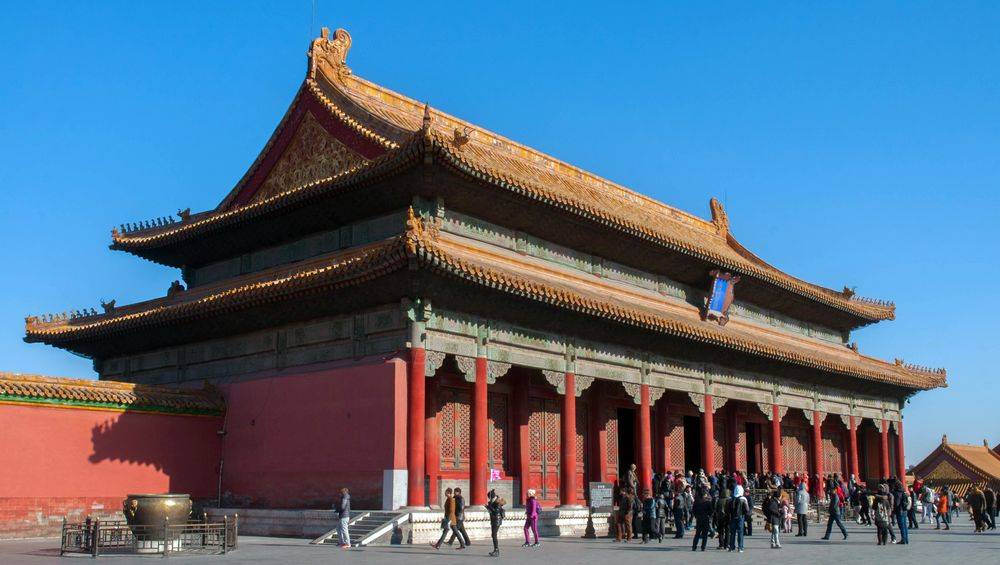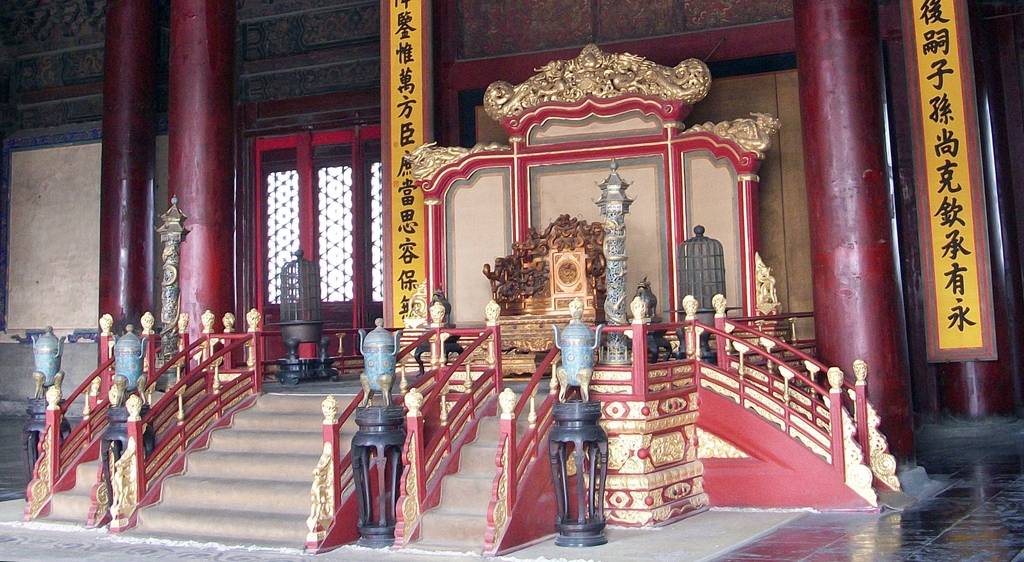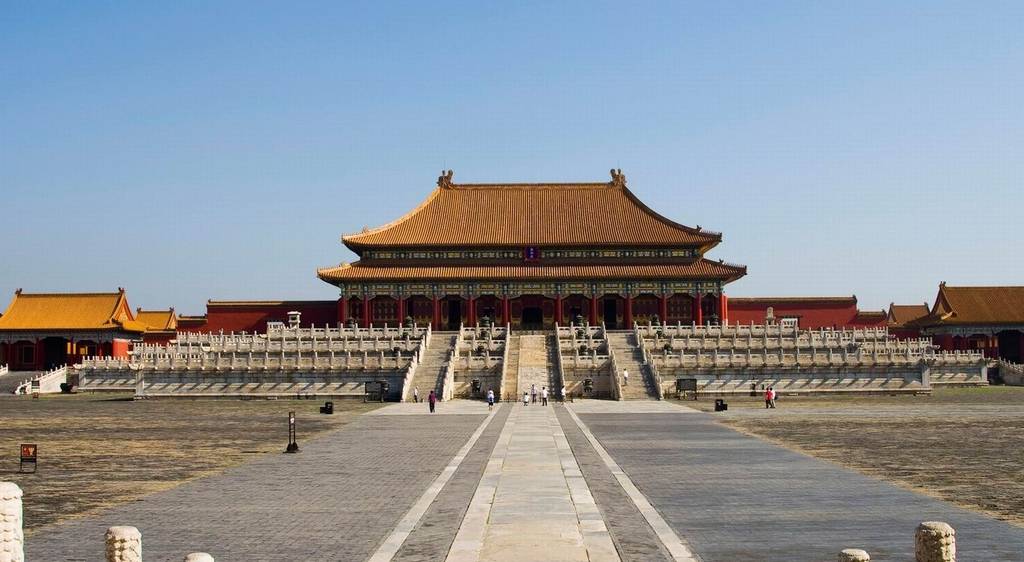Pavilion of the supreme harmony (Baohedian)
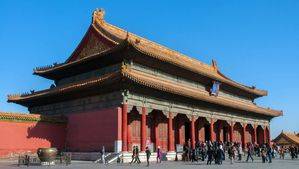
Pavilion of the supreme harmony
The Pavilion of Supreme Harmony is named "Taihedian" in Chinese. This is the main palace of the emperor. It is north of the large outer courtyard, the largest in the Forbidden City, which is still a trifling 30,000 square meters. The palace is raised about five meters, the whole basement being made of layers of marble superimposed staggered. Only the basement has three levels.
It is the palace of the emperor. There he received senior officials but especially foreign delegations. All the great ceremonies were held here, especially during the advent of the new emperors. Anniversaries, weddings, and other occasions were also celebrated, such as the celebration of the winter solstice, the Chinese New Year, and declarations of war.
When the visitor climbs one of the three imposing staircases he can not help but notice the presence of 18 bronze dings, a kind of Chinese antique ship. Each of them represents one of the national provinces of the time. On the marble terraces the balustrades are luxuriously decorated with cranes and bronze turtles, symbols of domination and eternal longevity. There are also two gilt bronze vats in front of the building, which were used to store water in case of fire.
This building is the tallest of all the buildings in the Forbidden City, at least it was in the Ming and Qing dynasties. No other could be higher, for the Emperor could never be below anything at any time. Only takes place this palace is a symbol of imperial power
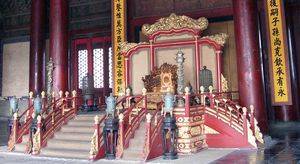
The imperial throne
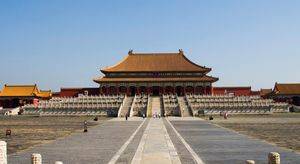
The pavilion and the courtyard
The hall is 35.02 meters high (37.44 meters, including the decoration on the roof). it is 63.96 meters wide and 37.2 meters long respectively. There are a total of 72 pillars, in six lines, supporting the roof. The doors and windows are embossed with clouds and carved dragons. Inside, the floor is paved with special bricks that have been worn out by the weather. Best symbol of imperial power, the throne of sandalwood, standing on a platform two meters high, is located in the center of the room, surrounded by six pillars of thick lacquered gold adorned with dragons. Other dragons are carved in the golden throne. Around the throne stand two bronze cranes, an incense burner in the shape of an elephant and a tripod in the shape of a mythical beast. It is richly decorated with dragons, giving an aura of solemnity and mystery.
In the center of the ceiling are two dragons playing with pearls. They were made of glass and painted with mercury. The pearl was supposed to have the ability to detect a usurper to imperial power. If someone who was not the descendant of Emperor Huang Di and thus usurped the throne, the pearl had to come down and hit him dead.
In front of the palace, on the white marble terrace, the visitor can see two curious objects: a sundial and a grain measure. These are symbols of imperial justice, quite simply.
See too:
Back to the list of the pavilions of the forbidden city






